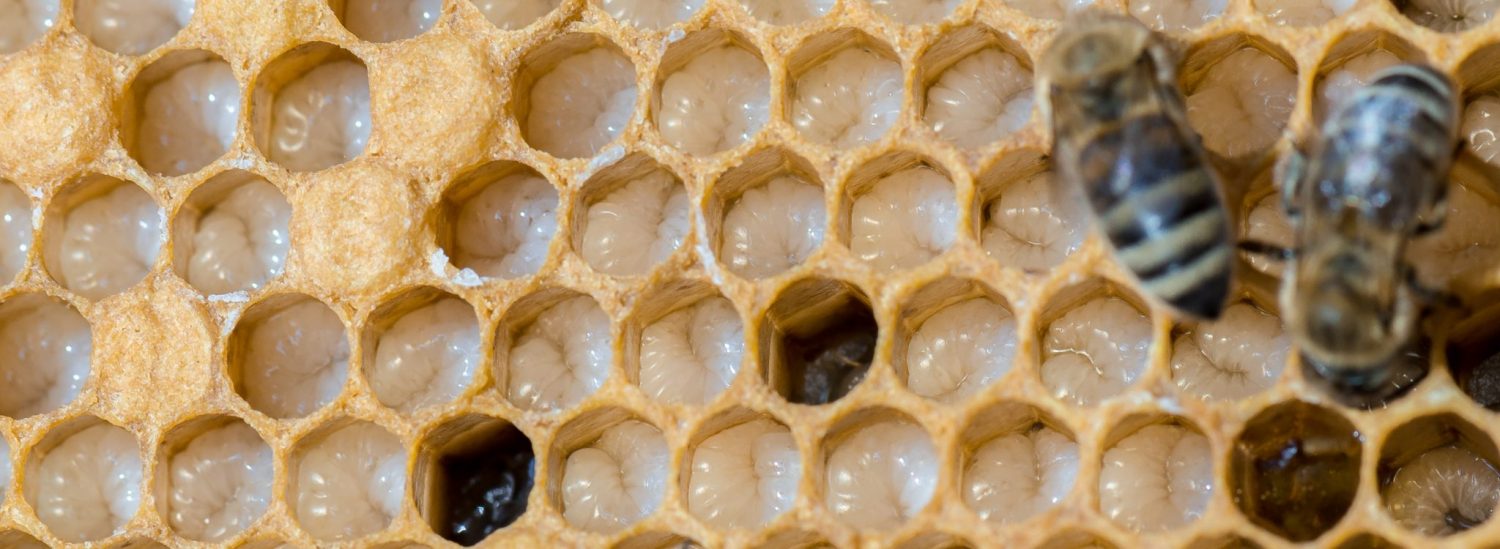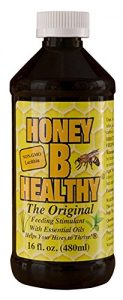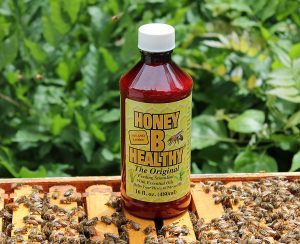If you purchase an independently reviewed item through our site, we earn an affiliate commission. Read our affiliate disclosure.
The brood is the lifeline and the future of the bee colony. Therefore, the beekeeper that is able to raise a healthy brood is guaranteed of success from the beginning. The process of feeding your brood with brood booster can be simple but the catch lies in determining whether it is necessary to feed the bees with it or not, getting the right measurement and deciding when to do so.
Some of the major factors that determine the need for a brood booster include: colony size, availability of forage, and weather condition. The colony size matters since large populations can result in starving or swarming. It is therefore wise to check out the colony size and determine whether a food supplement is needed or not. The weather should also be considered since various regions have varying seasons. In some regions such as the northern parts of the US, a booster is well served in late February or early days of March. Those within the southern climate may begin feeding their bees with a brood booster from as early as January. The type of forage available should also be considered. Late blooming varieties of trees will require a substitute whereas early bloom types of trees may render the brood booster unnecessary.
What is a Brood Booster?
Simply put, the brood booster refers to a feeding stimulant for honeybees. It is composed of all the natural food grade ingredients required by bees for optimum growth. The product is usually added to sugar water, pollen patties, or syrup so as to stimulate feeding and help build a strong bee colony. It is commonly used by those with weak colonies, colonies prone to swarming or those who desire to build strong nucs. The stimulant is also used by some beekeepers on wax or plastic foundation as way of encouraging comb building.
The brood booster is widely used since it has been proven to increase bee colony population. It is also the best remedy for those with bees that dislike bee syrup. The natural ingredients found in brood booster helps supplement natural pollen especially in times of shortage such as late winter and early spring. A great benefit associated with the stimulant is the fact that it helps prevent sugar syrup from fermentation. It also helps in instances where a new queen is introduced into an existing hive. It encourages new queen acceptance. Some of the ingredients in brood booster include but are not limited to: lecithin, sucrose, essential oil blend, and water. All these are required for a healthy colony to thrive.
What is a brood?
The brood simply refers to the 3 stages of development in bees. Well talk about each of them below.
The first stage in bee development is a tiny white egg. One egg is normally deposited in each of the worker or drone cells. These eggs are tiny and cannot be seen easily with the naked eye. This stage of bee development takes three days and the eggs can either be fertilized or unfertilized. Fertilized eggs transform into the worker bees whereas the unfertilized ones become the drones.
The second stage is the larvae, a white grub with no legs that spends all its time in the wax cell and eats heavily. It grows rapidly through a five step development stage and are fed by adult nurse bees. The larvae is never fed directly by the worker bees but they simply place the food in their cell.
The final stage in brood development is the pupal stage that is also referred to as the capped stage. The pupal stage duration varies depending on the type of bee in question. Queens will take 5 and half days, drones 6 and half and worker bees 6 days in their pupal stage. At this stage the larvae transforms rapidly and acquires the features of the adult bee. The pupal stage is called capped stage since the larvae remains in its cell even though the cell is now capped with wax. At this stage the pupa never moves or eats. The development rate of the egg, larva or pupa will be affected by the temperature levels within the brood nest. Development will take longer when temperature levels fall. Too high temperatures may also lead to brood death. An optimal temperature level is required for excellent brood development.
Feeding of the Brood
The royal jelly is the main food for the bee larvae. It is rich in protein and is usually supplied to the larvae within its cell. The substance is placed within the cell just before the hatching of the egg. The queen consumes the royal jelly throughout its larval life whereas the worker and drone larvae begins to eat pollen and nectar mixture after 2 and half to 3 days.
Proper supply of food to the brood means a healthy bee colony which translates to a colony that is better prepared to withstand stress and diseases. A well fed brood ultimately translates to a more productive colony as well. The brood requires a combination of carbohydrates, vitamins, protein, and lipids so as to develop well. The main source of carbohydrates is nectar or honey. Other nutrients are sourced from pollen. The nutritional component of pollen varies depending on the forage and this offers a huge advantage to the bees since they forage in different plants.
The end of winter marks a period of food shortage in a bee colony since most of the food reserves have been depleted at this time. The feed pollen substitute should therefore be provided to the bees at this time. A supplement rich in amino acids is required by the bees in order to produce the brood. This food provided at early spring helps the bee colony kick-start the season in top gear.
Pollen substitutes or brood boosters are now produced by many companies. Each may have a different profile of the essential nutrients and therefore it is wise to preview the components before making a purchase.
Why do you need a brood booster?
You need the brood booster for a number of reasons:
- When establishing a new package of bees there may be little food for the bees. It is essential that the bees are provided with a stimulant in addition to the sugar syrup and pollen patties. This will help encourage rapid colony buildup and growth of the brood. Failure to do this may mean that the colony fails to get established and stock enough food fast enough before the first winter.
- Swarming just before a period of scarcity may also force the beekeeper to feed the captured swarm with a brood booster. This will help the bee colony establish a strong brood and secure the future of the bee colony.
- When spring nectar flow is late a brood booster is required. Instances where there is a summer drought the bees may not be able to store enough food for the brood and the bee colony and hence the need for a boost.
- The brood booster is required by weak colonies. It helps encourage feeding and hence guarantee faster buildup of a stronger bee colony.
- It also helps prevent mold growth in sugar syrup thanks to its ingredients.
- At times bees may not readily accept a new queen. In this case a brood booster will make it easy for the existing bees to accept a new queen.
- A brood booster can help encourages comb building when sprayed on the foundations.
Brood Booster Product Reviews
1. Bountiful Bee Brood Booster and Feeding Stimulant
This product from Bountiful Bee is formulated solely for those who want to build or strengthen their brood. It is a feeding stimulant made up of water, lecithin, sucrose, and an essential oil blend. The stimulant has been tested and proven through field trials and found to increase colony population. It also encourages bees to consume sugar syrup. This product can be mixed with sugar syrup, pollen patties, or any other honey bee food supplement.
Features
- Its main components are all natural food ingredients that include: sucrose, lecithin, water, and an essential oil blend.
- Additional measuring equipment not necessary since the package comes with a convenient measuring sprout.
- It can be used with sugar water so as to encourage feeding in bees and brood. This is required for strengthening weak colonies, building strong nucs, and newly collected swarms.
- It helps encourage bees to build combs and enhance acceptance when sprayed on plastic or wax foundations.
- Mix this with sugar syrup so as to prevent the growth of mold.
- Tested and proven to be effective in increasing bee population and encouraging bees consume sugar syrup.
- It is packaged in a container of 7.8 x 4.3 x 1.9 inches that weighs 1.33 pounds.
Pros and Cons
Pros
- Made of all natural ingredients.
- Helps prevent syrup fermentation.
- Encourages new queen acceptance.
- Easy to measure and use.
- Value for money.
- Encourages comb building.
- Rapid population growth guaranteed.
- Enhances a healthy brood, free from diseases and hence maximum production is guaranteed.
- Longer lasting.
- Boosts bee appetite. Sugar consumed rapidly in a short time.
Cons
- No negative feature noted.
2. Honey B Healthy Original Feeding Stimulant with Essential Oils
The Honey B Healthy Feeding Stimulant is composed of 100% essential oils. It is specially formulated for use in spring and winter so as to improve bee immunity and encourage thriving colonies. It also helps prevent buildup of fungus and mold. This stimulant also helps calm bees when used as a spray.
Features
- It is a stimulant formulated for boosting the immune system of bees.
- Helps keep off fungus and mold. It also helps calm bees.
- The stimulant is made up of 100% natural essential oils in addition to Lecithin that is not genetically modified (GMO).
- It helps build strong bee colonies in periods of scarce nectar.
- The stimulant is ideal for beekeepers whether hobbyist or professional beekeeper.
- It is packaged in a 16oz bottle with dimensions of 6 x 3 x 3 inches.
Pros and Cons
Pros
- Keeps the bee colony healthy and vigorous.
- Excellent immune boost to keep bees strong and free from diseases.
- Made of all natural ingredients that are food safe.
- Helps encourage bee feeding during periods of nectar shortage.
- Delivers a calming effect on bees as spray.
- Helps prevent formation of fungus and mold.
- Easy to use.
- It works as expected.
Cons
- Highly priced.
Further Thoughts
The brood booster is a must have for all beekeepers. Food scarcity is a problem that cripples most beekeepers and in some instances bees may refuse to take sugar syrup provided. In such a case a stimulant is required. The brood booster allures to bees and hence the reason it is mixed with other food supplements. Weak hives can benefit immensely when supplied with a brood booster. It also helps a new collected swarm establish itself and thrive. One of the reasons for feeding a brood booster to bees is the fact it boosts the immunity of the bees which means the bees can be resistant to diseases. This also means the bees can withstand hash climatic changes.
Conclusion
The brood booster from different manufactures may vary when it comes to the components, efficacy and price. Ideally, most manufacturers use 100% natural ingredients when formulating a brood booster. Most of the common ingredients in use include: sucrose, essential oils, water, and GMO-free lecithin.
Some of the benefits of a brood booster include: boosts bee immunity, leads to rapid beehive population growth, easy new queen acceptance, prevent mold and fungus, encourages sugar syrup consumption, and helps boost comb building. All these help build a prosperous bee colony.
Do you use a brood booster? What do you think of them? Leave a comment below and let us know.
 BeeKeepClub Resources and Guides for Beekeepers
BeeKeepClub Resources and Guides for Beekeepers






Essential oil supplements can be helpful and are easy to make yourself. Look online and one will find the same recipe and uses on many club and BK websites. Ingredients are lecithin, spearmint oil, lemon grass oil and sugar. A few good websites are: https://carolinahoneybees.com/essential-oils-honeybees/, http://www.wvu.edu/~agexten/varroa/honeyBhlth.htm, http://ziaqueenbees.com, https://honeybeesuite.com/how-to-prevent-moldy-syrup-in-bee-feeders/
I make up a gallon each spring and it lasts all year. Buy the smallest packet of lecithin and bottles of oil possible as it takes only a tiny amount so they last for years. Lemon grass oil can also be used sparingly with swarm traps.
[…] feed the bees during the hardier months such as winter. The harvested pollen can also be used for boosting brood production since it is rich in protein required for raising brood. Pollen has also gained popularity with […]